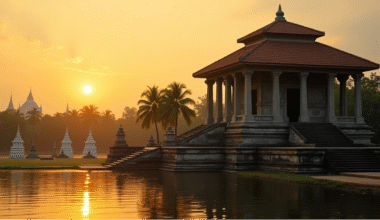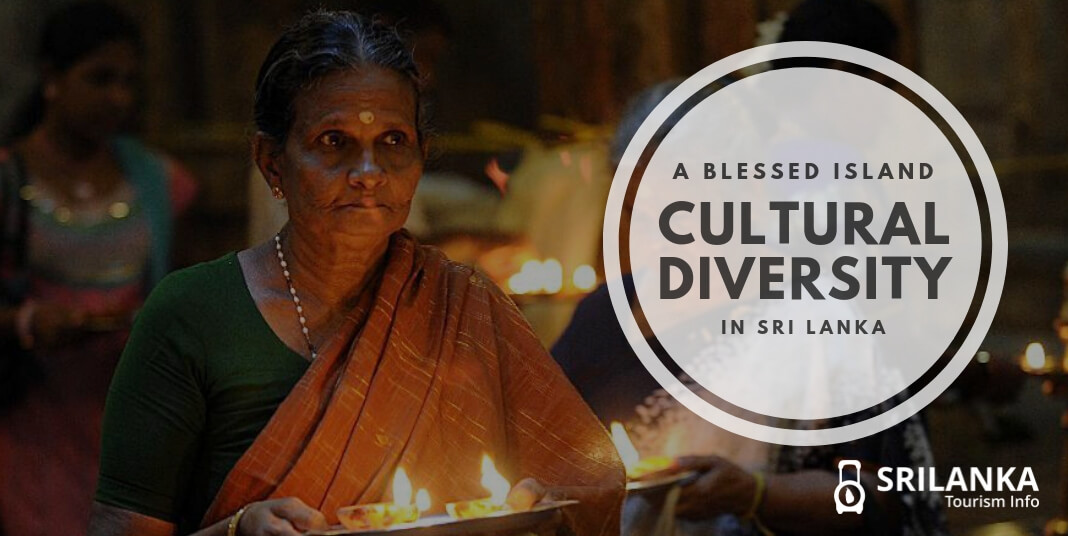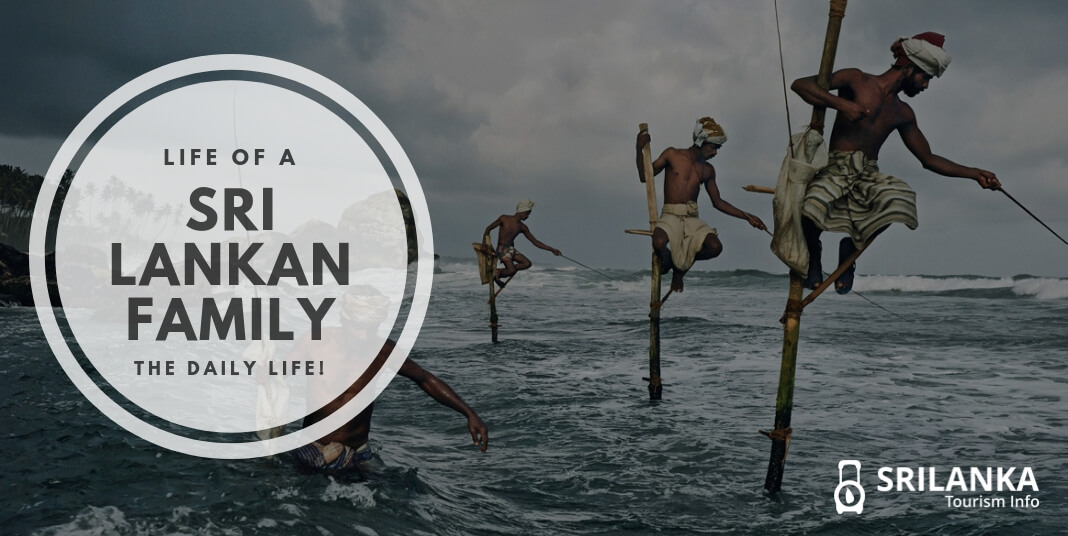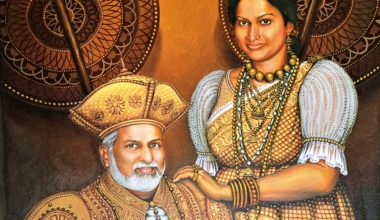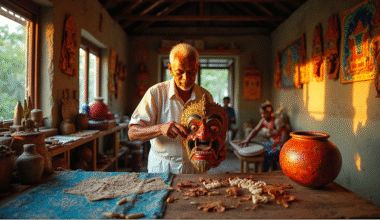Women draped in gold and white sarees, while men in the traditional turbans and sarongs — call for a big fat Sinhalese wedding.
Popularly known as the “teardrop of India”, Sri Lanka leaves visitors awestruck with their beautiful representation of grace and heritage into their weddings. For many decades now, Sri Lanka has garnered visitors from across the world — experiencing their rich culture and heritage was part of their checklist too.
Sri Lankan weddings are a worthwhile experience — where ceremonies require days of preparation. What was once limited to a divine alliance between two individuals has now become an extravagant affair. People from the Indian subcontinent, especially, have made it look grandiose.
Celebrated with much pomp, the traditional Sri Lankan wedding culture cannot be given a miss.
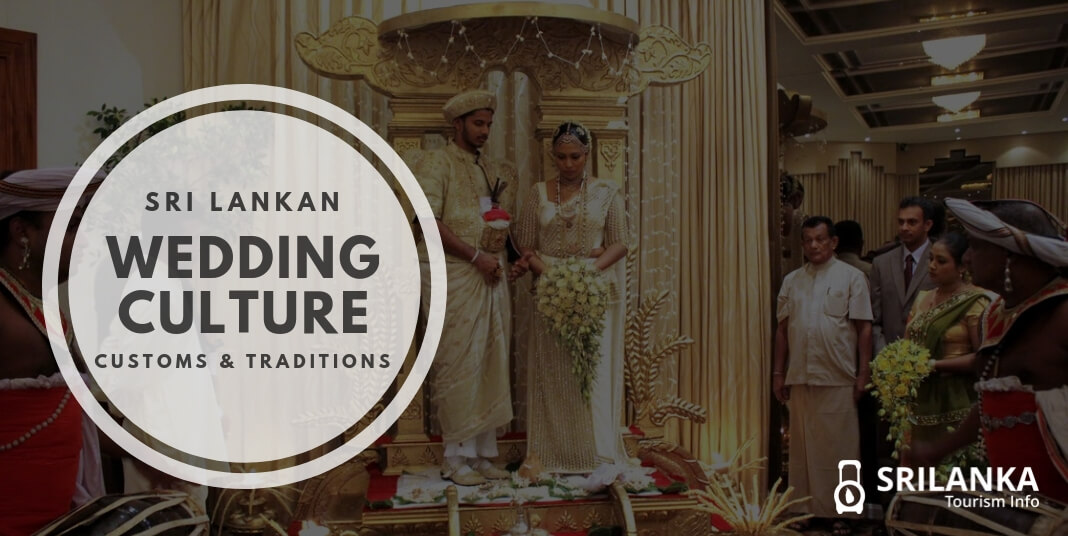
To go back further in time, a Sinhalese marriage had similar laws to those practiced in the Hindu laws. But, as Buddhism spread across the country in the early third century B.C, the marriage laws and customs, and the legal position of women underwent a drastic change — primarily known for improvement.
Before we take you on a walk down the Sri Lankan Wedding culture, the following groups that reside in Sri Lanka need a bit of understanding.
Ethnic Groups Residing in Sri Lanka
Ranked the 58th most populous country in the world, Sri Lanka has various ethnic groups finding shelter across the island.
The largest of all — the Sinhalese, is followed by the Sri Lankan Tamils, Muslims, Indian Tamils, and so on. All that said, following is a quick overview on the aforementioned ethnic groups that currently reside in Sri Lanka.
Sinhalese
Sinhalas are the people believed to have originated from the times of Prince Vanga. The Sinhalese were then organized in kingdoms, and driven by their hereditary kings.
A community known for speaking Sinhala or Helabasa, Sinhalese have been recognized by their skills in fine arts, literature, and dancing, just to name a few. For self-defense, this community also mastered a form of martial arts called ‘Angampora.’
Sri Lankan Tamils
Commonly referred to as the original inhabitants of Sri Lanka, the Sri Lankan Tamils are genetically linked with Sinhalese. However, they are significantly different in terms of culture. Based on the geographical location, Sri Lankan Tamils are subdivided into three separate groups – Negombo Tamils, Eastern Tamils, and Jaffna Tamils.
The numbers are staggering; close to about 80% of Tamilians are believed to be Hindus, while the larger part of the remaining 20% practice Roman Catholics.
Sri Lankan Moors
The largest ethnic group belonging to the Muslim community, the Sri Lankan Moors — is closely associated with Tamil speakers and a few facets of the Arab culture. The Moors are known to have borrowed their tradition from the Arabs — a tradition that allows people to share large plates during wedding ceremonies.
Indian Moors
Believed to have migrated from India during the British colonial period, Indian Moors have a rich history serving as plantation laborers. The majority comprises of Islam — with the religion defining the traditions. Moreover, Indian Moors have been reduced to a point where they were counted as termed “others” in the 1981 census.
Also Read: Sri Lanka Travel-An experience like none
Sri Lankan Wedding Ceremonies
Pre-Buddhist Era
During the British rule in Sri Lanka, ‘Kandyan’ was prevalent. Kandyans are natives of Kandy, a city famous for ‘Temple of The Tooth Relic’.
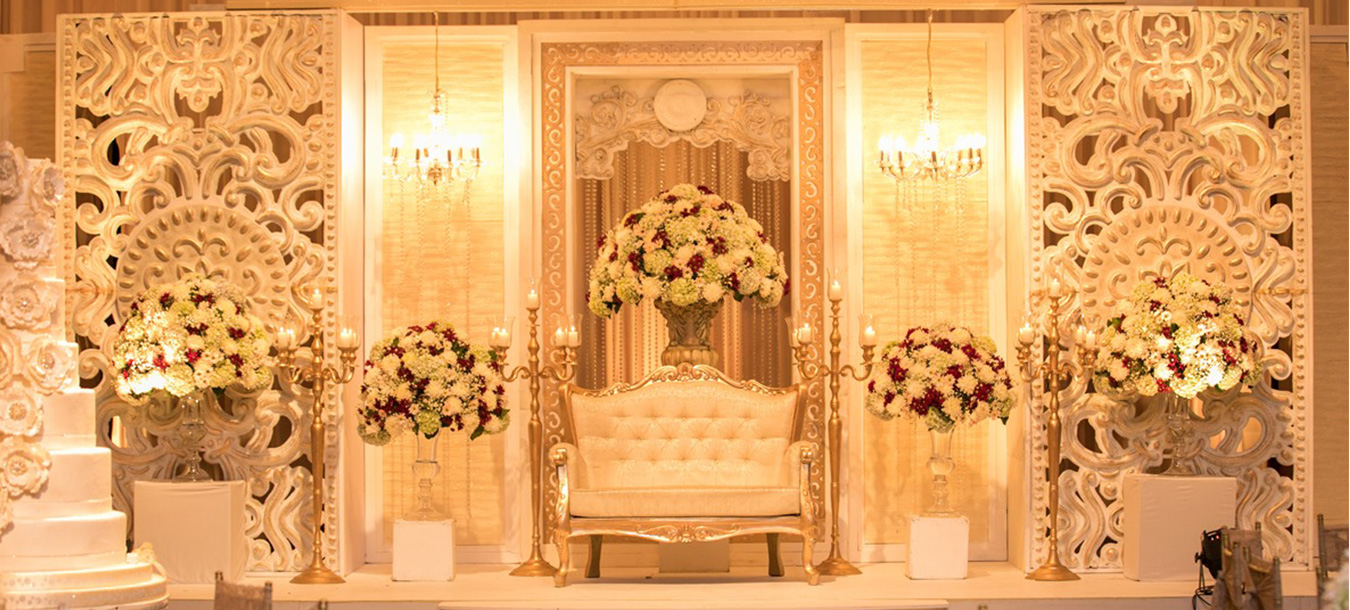
Polygamy and polyandry were famous in this bygone era. Moreover, marriages such as group and trial were common too. Divorce laws were simpler — be it, men or women — anyone could dissolve the marital tie, at their will and pleasure.
Sri Lankan-Buddhist Wedding Culture
Weddings are more than just social events. The solemn rituals and traditions play a prominent role in the Sri Lankan ceremonies. Every Sinhalese-Buddhist wedding ceremony is swamped with customs and traditions which are passed down from generation to generation. Although only a handful of ceremonies seem to have been changed, observing the nakath and Poruwa siritha is mandatory.
Following are the customs, traditions, and culture of a Sri Lankan wedding that is famous for a variety of reasons.
Nekatha – The Auspicious Time
The Nekatha also referred to as the auspicious time, is a very important part of a Buddhist wedding. The date and nekatha of a wedding are usually decided by an astrologer after examining the horoscopes of the bride and the groom. The birth date/time of the pair also plays an indispensable role in deciding the time and day of the wedding.
Poruwa Ceremony
Once the nekatha for the wedding has been finalized by an astrologer, the Poruwa ceremony will be held according to that. A traditional Sinhala-Buddhist marriage ceremony is referred to by many as Poruwa siritha.
British formally created registered marriages in the 1870s, and since then Poruwa siritha is considered as a recognised marriage agreement in Sri Lanka. The ceremony borrows traditions from different Sri Lankan communities and is a beautiful concoction of wedding customs practiced by Tamils and Sinhala people.
The decorations for a Poruwa ceremony include an elegantly adorned altar made of four wooden pillars clubbed with the bride and groom standing underneath a hanging roof.
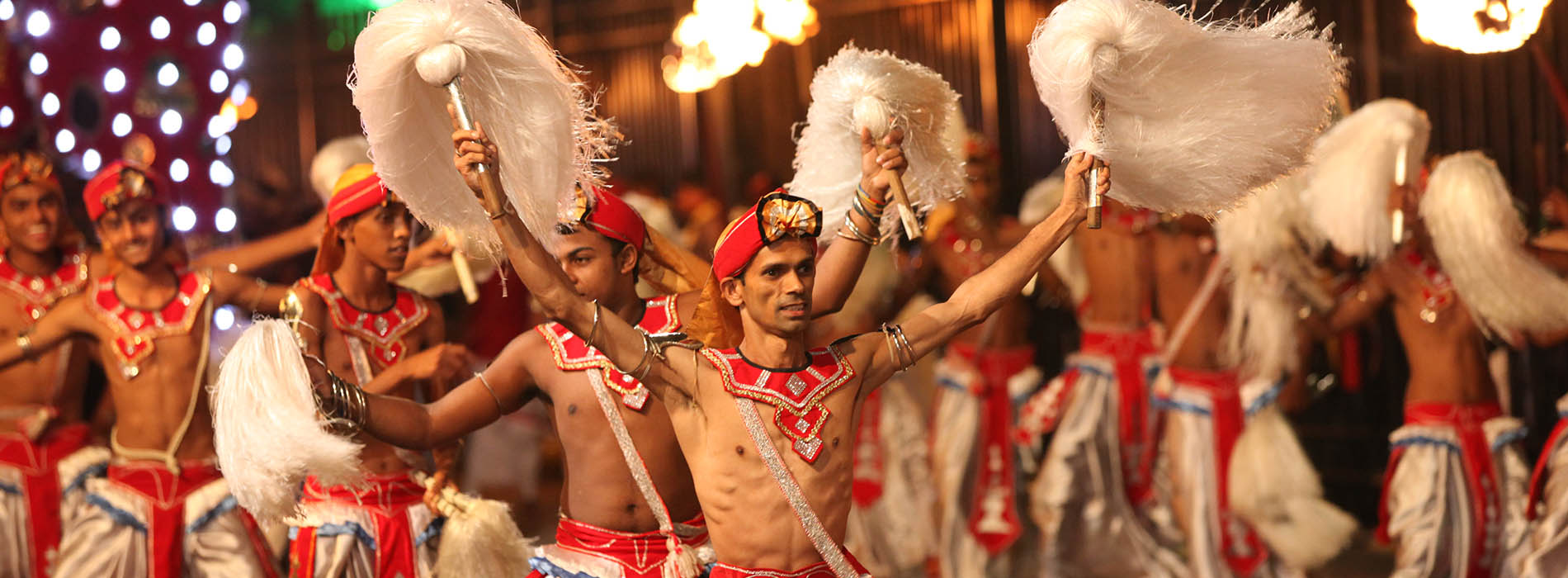
As the ceremony starts, the bride and the groom walk up together to the Poruwa, keeping their right foot forward and facing towards the guests. The guests are seated separately based on their relationship with the couple. Generally, the bride’s side is seated on the right side while the groom’s side is seated on the left.
The groom is escorted to the wedding location with a group of drummers and typical Kandyan dancers. We have an elephant all decked up for the groom to sit and admire the procession from the best seat in the house. The bride and the groom greet each other with their palms held together in a traditional manner.
The ceremony is off to a grand start by offering a sheaf of betel leaves to the couple, which they hold and then return those — only to be used during the Poruwa.
Also Read: Mirissa’s Secret Beach
Auspicious ‘Seven’
The seven betel leaf bundles are offered to God, as a request to protect the lives of seven generations beginning from their marriage.
Much like the Hindu customs, the bride’s father places the right hand of his daughter on the groom’s — a symbolic gesture of handing over the bride to the groom.
The Ceremony Begins
Sri Lankan weddings involve many people partaking – the master of ceremony (the shilpadhipathi), the ashtaka or narrator (who recites religious chants), and finally the four young girls known as the Jayamangala Gatha, who bless the marriage with religious chants.
There are multiple rituals and traditions that are sacred to Buddhism, each one is conducted due to a specific belief.
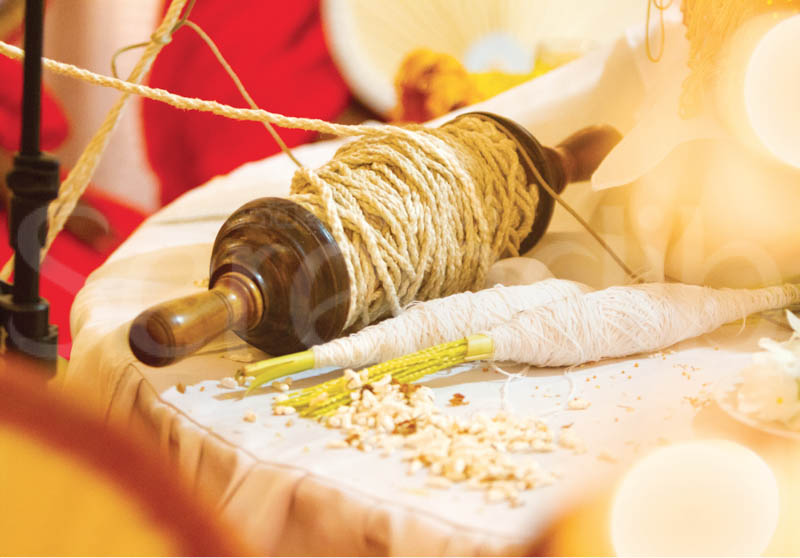
At the decided time, the ceremony begins. It often starts with the auspicious seven betel leaves ceremony. Each one takes a betel leaf at a time and drops it into the Poruwa. The bride and groom take turns and repeat the process.
Once the ceremony reaches its end, the groom’s brother is supposed to stand holding a tray consisting of a gold necklace. The groom then collects the necklace and ties it around the bride’s neck.
The Tying Of the Pirith Nool
Back then, when registered marriages weren’t a thing in the island country, the tying of the pirith nool (sacred thread), was considered as a symbol of the union of marriage. The gold-clad thread symbolises unity and is tied by the Master of Ceremonies.
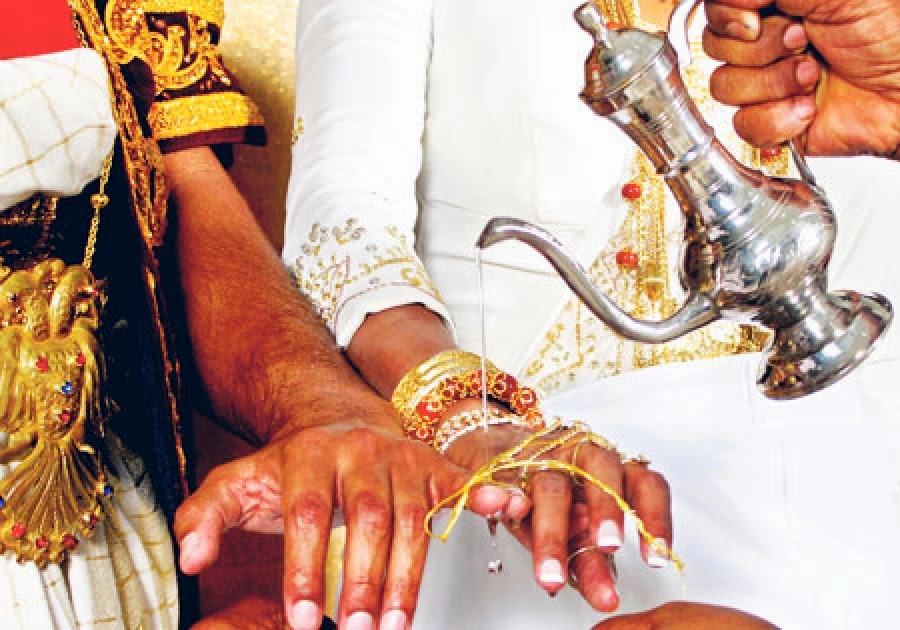
Once the Master of Ceremonies ties the bride and groom’s fingers, he then proceeds to pour pirith pan (holy water) from a Kandiyan crafted silver jug. This is a prominent ritual in any Sinhalese-Buddhist wedding. The ritual is significant because water and earth are two sacred elements in Buddhism.
Gifting of white cloth
After the completion of the pirith nool ritual, the groom will present a white cloth to the bride. The bride gazes at the beautiful-crafted piece of cloth and hands it over to her mother. The bride’s mother receives this as a token of gratitude from the groom’s family — for raising the bride since her birth.
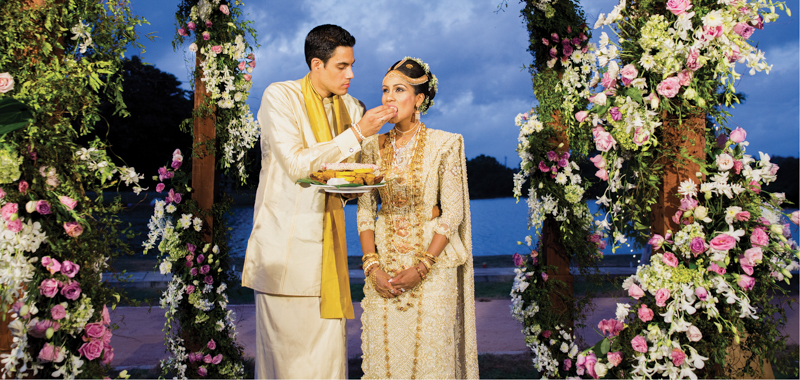
Regarded as the most wholesome and heart-warming part of Sri Lankan wedding culture — this is also the time when the groom promises the bride’s parents to take care of their daughter for the rest of his life.
Milk and Kiribath
A wedding is considered incomplete without sweets and desserts. While the western wedding culture emphasizes more on cutting the cake. A typical Sinhala-Buddhist wedding is famous for its kiribath or milk rice — touted as the most special kind of dessert among the sweetmeats.
The bride’s mother has the responsibility of feeding the couple some milk rice, followed by the groom’s mother being required to give them each a sip of milk. The ceremony ends with the bride and groom feeding each other some kiribath.
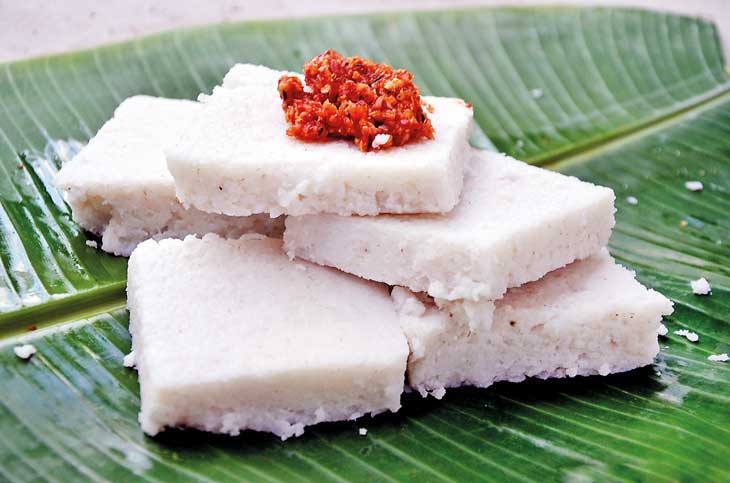
As the newly married couple steps down the traditional Poruwa, members from the groom’s side break a fresh coconut — signifying new beginnings. The moment the couple steps off from the elevated pavilion onto the ground teemed with drummers and dancers — is the moment they announce to the world as husband and wife.
Also Read: Tangalle Beach
Wedding Dresses in Sri Lanka
Bride Wedding Dress
Whether the Sri Lankan bride is Sinhalese or Malay, her attire is an alluring blend of eastern and western tradition. From distinctive western-style veils to timeless silk sarees, Sri Lankan brides look unique and adorable in their attire.
Must Watch Video – Click Here
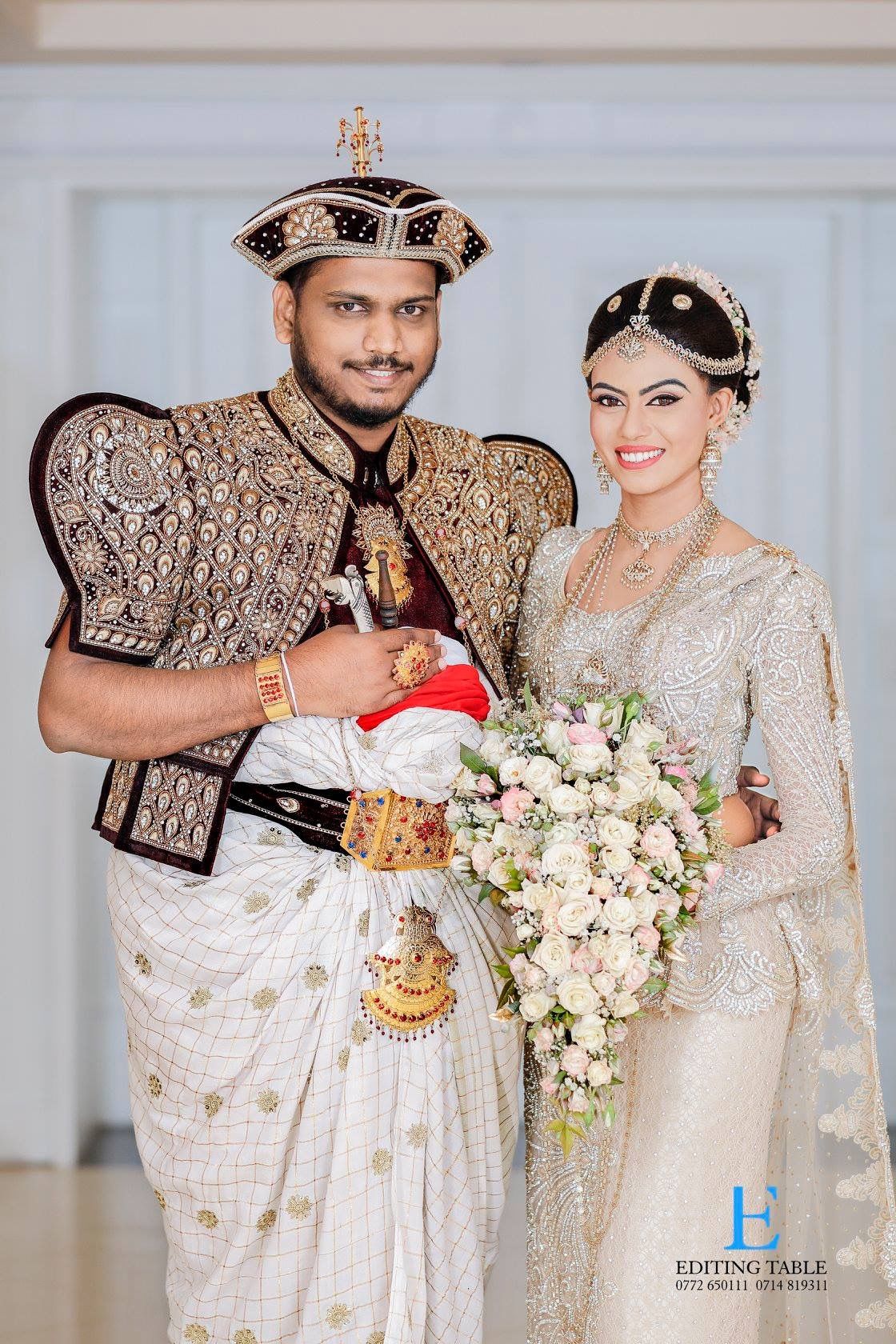
On the wedding day, the bride usually wears a heavily embroidered silk saree with a long blouse. The saree is weighed down with beads, pearls, stones, and sequins. The bridal saree usually boasts of gold and silver thread work. Certain brides also adorn themselves with blouses featuring puffy sleeves that are in line with royal custom.
Today, in the Poruwa ceremony, the exchange of rings, just like the western culture, is a common practice. Brides opting for a western wedding ceremony wear a white wedding dress similar to those worn in Christian weddings. To add to the look, they cover themselves from head to toe with jewels.
Groom Wedding Dress
The Sri Lankan groom’s wedding outfit is the most unique in the whole of SouthEast Asia. The look resonates with the royalty of the 19th century. He’s decked in a plush velvet hat and jacket that many Lankans fancy wearing in these times.
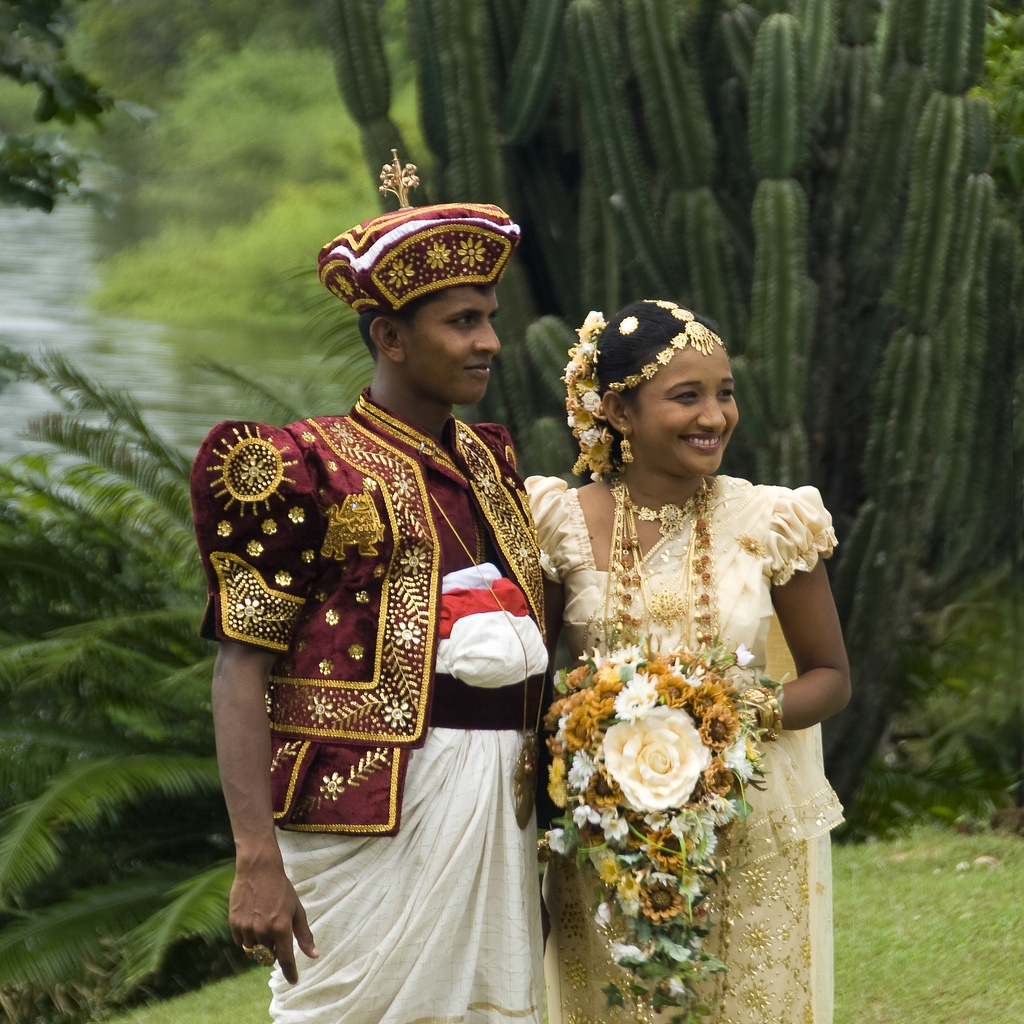
The groom’s outfit comprises a hat, jacket, mul anduma, and shoes. The mul and uma are made for the kings worn only on special occasions like the wedding. From head to toe, the groom’s outfit is heavily embroidered with silver and gold thread. The jacket and shoes match the hat. The groomsmen also wear similar outfits but not as grand as the groom. It is often referred to as the Nilame costume.
Bride’s Homecoming ceremony
The homecoming of the bride marks the end of a flamboyant Sri Lankan wedding. It takes place a few days after the wedding ceremony.
At the Poruwa ceremony — a saree and jacket, usually made of red material — is handed over to the bride by the groom’s mother. During the time of homecoming, the bride marks her entry into the house wearing this attire.
The Sri Lankan culture of weddings is the epitome of grace and heritage. Every ritual beautifully signifies the beginning of a new stage in life. Besides witnessing the union of two souls, friends and family must look at a Sinhala-Buddhist wedding. A time to witness the traditions and rituals that have been part of the country for a long period of time.
There is nothing like a quintessential Sri Lankan wedding, which is the favorite part cherish that involves the best food with the best people around.
Found this blog useful? Like, comment and share! If in case we missed something, do let us know using the comments section below.

